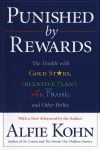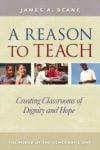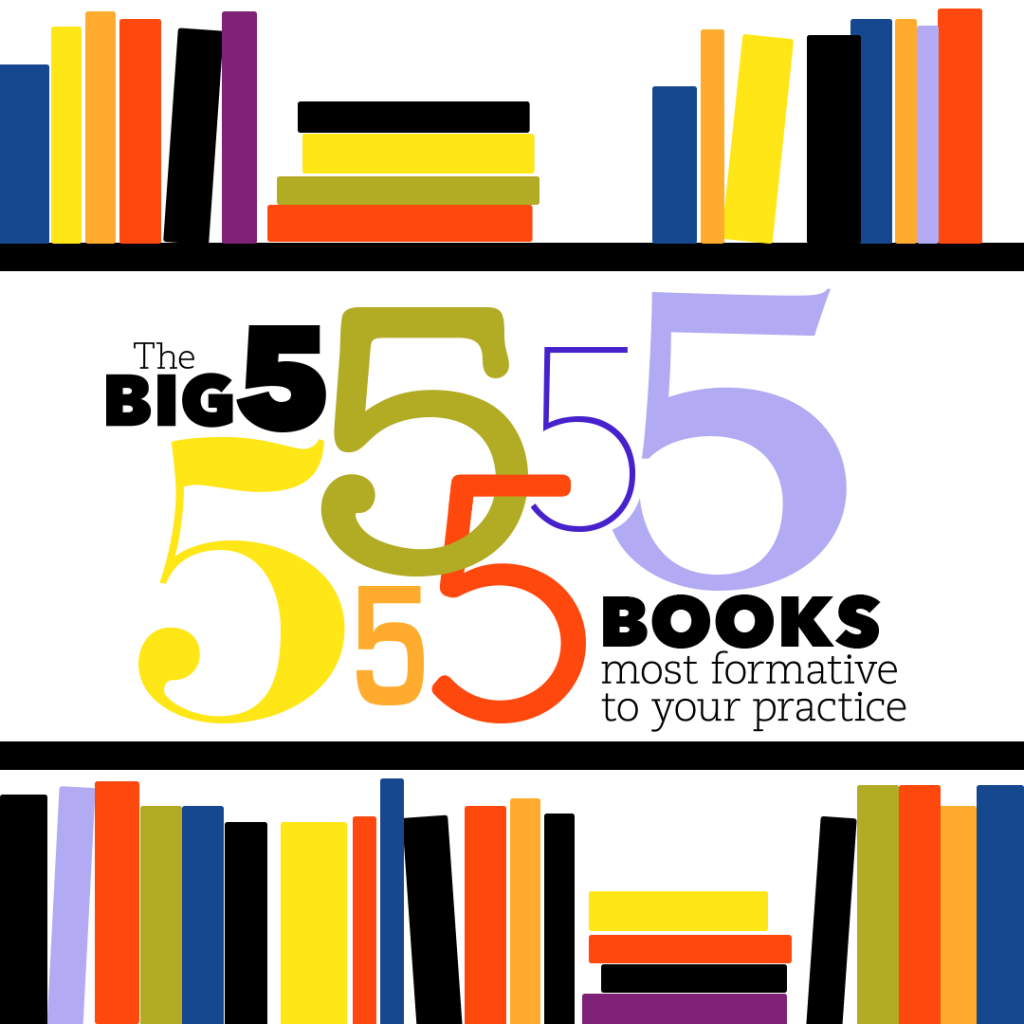
Every so often we like to ask our authors about the books that most affected their teaching, the books that served as a turning point in their practice or opened their eyes to a new way of approaching their work, thinking about education, or seeing children. In this installment, we bring you the professional book top five of Harvey AKA Smokey Daniels, who has been a city and suburban teacher, a professor, a writing project director, a columnist for Voices from the Middle, and a consulting editor for Heinemann. Smokey has authored or coauthored 19 books, including Best Practice, Literature Circles, Upstanders, Subjects Matter, and the Texts and Lessons series. His brand-new book is The Curious Classroom: 10 Structures for Teaching with Student-Directed Inquiry.
It has been a delicious discipline to stand in front of my 27-foot-long professional bookshelf and try to identify the Really Big Ones. Of course, there are way more than five. Almost anyone in this field, in this generation, must have Graves, Calkins, Atwell, and Harvey and Goudvis on their lists. So I’ve chosen slightly less lionized authors and, just for fun, ones that I have been lucky enough to get to know personally.
♦ ♦ ♦ ♦
Teaching as a Subversive Activity. Neil Postman and Charles Weingartner. (Delta, 1969)
In 1969, I started teaching at a vocational high school on the west side of Chicago. There, I discovered my first incendiary mentor text: Teaching as a Subversive Activity. The classic cover, showing an apple with a lit fuse as its stem, perfectly embodied the book’s contents—and my own reason for entering teaching—to blow things up. I had been a terrible student who hated school and wanted to show that education could be engaging, meaningful, and progressive, so the book became a manual for me. Postman later became a real-life mentor, including inviting me to work with him at NYU. I still have a collection of his avuncular, handwritten letters. In one of the later ones, when he had become an internationally celebrated social theorist, he tagged on these words: “Try to be a little famous. It’s great.” Rest him well; the man loved his job.
♦ ♦ ♦ ♦
 Punished by Rewards: The Trouble with Gold Stars, Incentive Plans, A’s, Praise, and Other Bribes. Alfie Kohn. (Houghton Mifflin, 1993)
Punished by Rewards: The Trouble with Gold Stars, Incentive Plans, A’s, Praise, and Other Bribes. Alfie Kohn. (Houghton Mifflin, 1993)
What would we do without Alfie Kohn? He’s been education’s truth teller for decades now. This classic Kohn tome blew the lid off the standard school machinery for manipulating, grading, tracking, sorting, and discarding kids. I was honored to be Alfie’s “second” when he was invited to a famous Chicago suburban high school. On the first evening, he spoke about the evils of competition to an assembly of astonished parents, just off the train from their Masters of the Universe jobs downtown. The next day, when Alfie was visiting classes, the students dutifully echoed their parents’ horrified reactions. My daughter was in a bathroom stall when she heard other girls talking about how this weird guy, Alfie something, who gave that terrible speech last night, had been found dead on the third-floor landing. That’s how powerful and threatening Alfie’s ideas are; the powerful need him to not exist.
♦ ♦ ♦ ♦
 Creating Classrooms for Authors and Inquirers, Second Edition. Kathy Short, Jerome Harste, and Carolyn Burke. (Heinemann, 1996)
Creating Classrooms for Authors and Inquirers, Second Edition. Kathy Short, Jerome Harste, and Carolyn Burke. (Heinemann, 1996)
Jerry Harste is one of my straight-up heroes. He was the guru of inquiry learning before anybody even knew what he was talking about. In 1990, he cofounded the Center for Inquiry in Indianapolis, which now includes five public schools serving kids K–12. This 626-page book is packed with teaching ideas, huge and small, that I have explored over my whole career. From just a couple of paragraphs, I was inspired to write a whole book about the authors’ idea for written conversations. Any tendency I ever had to lecture my students was eradicated the day I watched Jerry give a packed auditorium session that was totally interactive—we read, we wrote, we discussed, we thought, we debated. Last year, Jerry and I had a welcome catch-up chat in the back row of a conference. He’s as brilliant, iconoclastic, and BS-free as ever.
♦ ♦ ♦ ♦
 A Reason to Teach: Creating Classrooms of Dignity and Hope. James Beane. (Heinemann, 2005)
A Reason to Teach: Creating Classrooms of Dignity and Hope. James Beane. (Heinemann, 2005)
My friend and colleague Jim Beane has been a major figure in the middle level movement, in curriculum design, and in democracy education for five decades. If you ever took a Foundations of Ed course during your teacher training, you probably read his Democratic Schools, written with Mike Apple. Jim connects us with the long and strong tradition of progressive education in America; more than anyone I can name, he is the keeper of the vision. Along with his wife, the master teacher Barbara Brodhagen, Jim has anchored himself in the real classrooms of Wisconsin, historically the heartland of progressive politics and education in America. These days, Jim supports young teachers in their attempts to teach the democratic way. As he writes, “No matter how bleak the current situation seems, the democratic way will surely find its way into the hearts and minds of more and more teachers, and into the culture and curriculum of their classrooms and schools. And from there into the lives of their students.”
♦ ♦ ♦ ♦
Frogs into Princes. Richard Bandler and John Grinder. (Real People Press, 1979)
Regrettably, I never met these guys in person, but Bandler and Grinder are the psychologists who invented neurolinguistic programming (NLP). While its label can be off-putting, NLP says there is a common and explicable “structure of magic” behind the work of all great teachers, healers, and therapists—regardless of differences in their surface behavior and visible moves. I immediately loved Frogs into Princes because the whole book was transcripts of actual workshops B&G had offered. As someone who was just honing my own workshop chops, it offered a great and often hilarious model of how to empower groups of people. One of many life-changing ideas I got from Frogs: The meaning of your communication is the response that you get. Literally. Your intentions do not matter. The meaning is what is received, not what you think you “sent.” Try living with that principle for a day or two, in the classroom, or in life. Whew.



